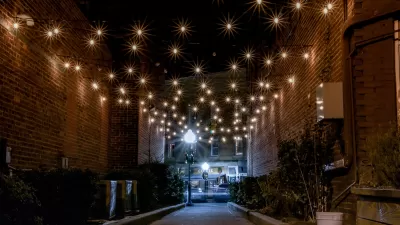For nearly a decade, the narrative of the move back to the city has held sway in American life. But newly analyzed Census data indicate that the presumed death of the suburbs may have been premature.

After a century of suburbanization, it seemed that urban trends in the United States had reversed themselves. Center cities were getting denser, nicer, and more vibrant. No one in their right mind would live in a suburb any more. Millenials cared more about urban amenities and living close to one another than they did about yards and personal space. Center cities, for the first time in decades, grew faster than did suburbs. Entire subdivisions, their residents ravaged by mortgage debt, turned into ghost towns.
Newly analyzed Census data says, not so fast. The outer suburban and exurban areas that suffered mightily during the Great Recession are showing signs of life. Growth on the urban edges is now occurring at higher rates than it is in center cities, according to the Brookings Institution. Center cities aren't shrinking—far from it—but the suburban dream appears healthy. The economy may have inspired the suburban exodus more so than cultural shifts did.
"The fledgling trend, captured in data through 2014, raises questions about whether American preferences for where and how to live truly changed much during the housing bust, or if we simply put our exurban aspirations on hold. At the same time, the shift calls into question a parallel and popular narrative: that Americans who once preferred the suburbs would now rather move into the city."
Meanwhile, residents who move within an urban area are now more likely to move from a center city to a suburban area than they were five years ago.
"We’ll have to wait until there's a generation of kids that come out that have opportunities to make decisions based on their preferences rather than just constraints," demographer William Frey of the Brookings Institution told the Washington Post. "That’s not yet happened, either. It may be starting to happen."
FULL STORY: New Census data: Americans are returning to the far-flung suburbs

Alabama: Trump Terminates Settlements for Black Communities Harmed By Raw Sewage
Trump deemed the landmark civil rights agreement “illegal DEI and environmental justice policy.”

Study: Maui’s Plan to Convert Vacation Rentals to Long-Term Housing Could Cause Nearly $1 Billion Economic Loss
The plan would reduce visitor accommodation by 25% resulting in 1,900 jobs lost.

Planetizen Federal Action Tracker
A weekly monitor of how Trump’s orders and actions are impacting planners and planning in America.

Wind Energy on the Rise Despite Federal Policy Reversal
The Trump administration is revoking federal support for renewable energy, but demand for new projects continues unabated.

Passengers Flock to Caltrain After Electrification
The new electric trains are running faster and more reliably, leading to strong ridership growth on the Bay Area rail system.

Texas Churches Rally Behind ‘Yes in God’s Back Yard’ Legislation
Religious leaders want the state to reduce zoning regulations to streamline leasing church-owned land to housing developers.
Urban Design for Planners 1: Software Tools
This six-course series explores essential urban design concepts using open source software and equips planners with the tools they need to participate fully in the urban design process.
Planning for Universal Design
Learn the tools for implementing Universal Design in planning regulations.
Caltrans
Smith Gee Studio
Institute for Housing and Urban Development Studies (IHS)
City of Grandview
Harvard GSD Executive Education
Toledo-Lucas County Plan Commissions
Salt Lake City
NYU Wagner Graduate School of Public Service




























